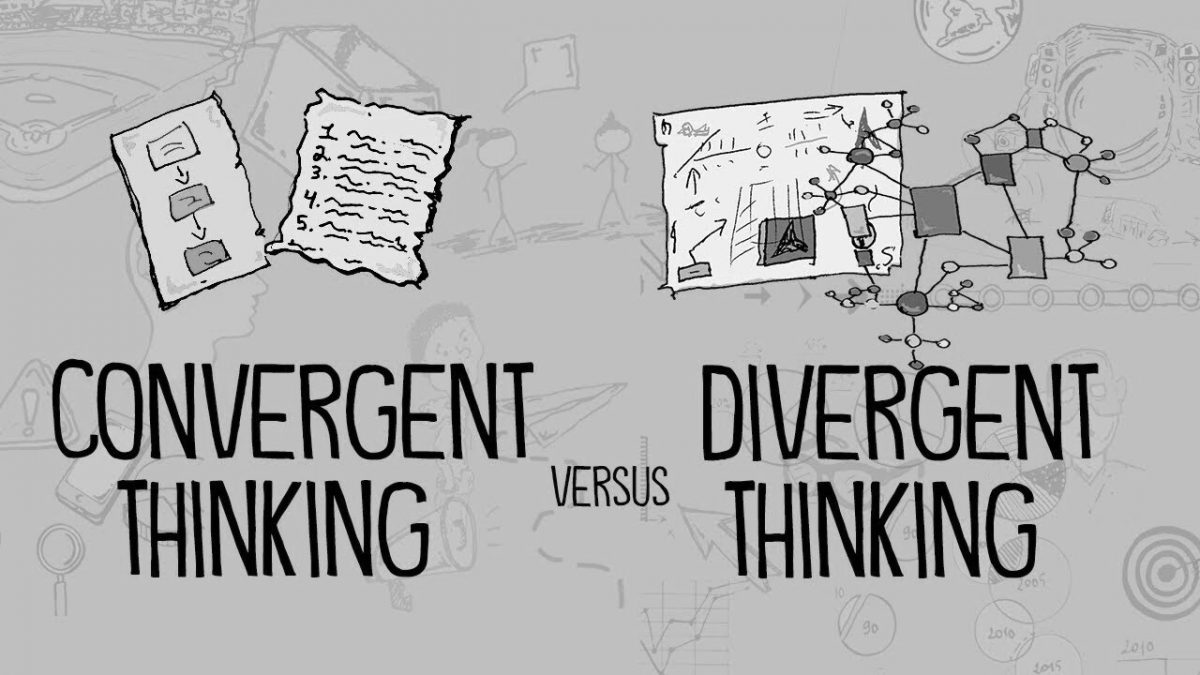Introduction
In the realm of decision-making, understanding the interplay between divergent and convergent thinking is essential. Divergent thinking involves exploring multiple possibilities and generating a wide range of ideas, while convergent thinking focuses on narrowing down options and selecting the best course of action. This mental model, rooted in human psychology, profoundly impacts our day-to-day lives and decision-making processes. In this blog post, we will delve into the concept of divergent and convergent thinking, its relevance in decision-making, examples of its occurrence in personal life, business scenarios, and public policy-making. We will explore the biases that contribute to this mental model, provide practical strategies to identify and overcome it, and emphasize the value of awareness and active avoidance of this cognitive trap.
Understanding Divergent and Convergent Thinking
Divergent thinking is the ability to explore numerous ideas, perspectives, and possibilities. It involves free-flowing thought, creativity, and open-mindedness. On the other hand, convergent thinking is focused on finding the best solution or making a decision by narrowing down options based on criteria and constraints.
Relevance in Decision-Making
Divergent and convergent thinking play a vital role in decision-making processes. Divergent thinking allows for a broad exploration of possibilities and can uncover innovative solutions and alternative perspectives. Convergent thinking, on the other hand, helps us evaluate and select the most viable option based on relevant criteria. Balancing these two thinking approaches is crucial for making well-informed decisions.
Anchored in Human Psychology
Divergent and convergent thinking are deeply rooted in various psychological processes and biases:
- Confirmation Bias: Confirmation bias can hinder divergent thinking by causing individuals to seek information that aligns with their existing beliefs or preferences. It limits the exploration of alternative ideas and narrows down the possibilities.
- Anchoring Bias: Anchoring bias occurs when individuals rely too heavily on initial information encountered during the decision-making process. It can restrict divergent thinking by fixating on a single idea or option and inhibiting the exploration of alternative perspectives.
- Status Quo Bias: The status quo bias leads individuals to prefer familiar or existing options over new or unconventional ones. It can impede divergent thinking by limiting the willingness to explore innovative or disruptive ideas.
Examples of Divergent and Convergent Thinking in Various Contexts
- Personal Life Decisions: Imagine a person deciding on a career path. Divergent thinking would involve exploring various fields, considering different interests, and brainstorming potential career options. However, if they prematurely narrow down their choices based on societal expectations or limited information, they may fail to consider fulfilling alternative paths.
- Business Scenarios: In business, when a company faces a problem, divergent thinking allows for a wide exploration of potential solutions. Brainstorming sessions, ideation workshops, and encouraging diverse perspectives can foster divergent thinking. However, if a team prematurely selects a single solution without thoroughly considering alternative ideas, they may miss out on potentially better or more innovative approaches.
- Public Policy-Making: In public policy-making, divergent thinking is crucial for identifying and analyzing various policy options to address complex societal issues. However, if decision-makers prematurely converge on a single policy solution without thoroughly exploring alternatives, they may overlook unintended consequences or fail to consider alternative viewpoints.
Understanding the Psychological Underpinnings
The biases and psychological underpinnings that influence divergent and convergent thinking include:
- Groupthink: Groupthink occurs when the desire for consensus within a group overrides critical thinking and individual dissent. It can suppress divergent thinking and lead to premature convergence on a limited set of ideas or options.
- Availability Heuristic: The availability heuristic biases decision-making by relying on readily available information. It can limit divergent thinking by disproportionately valuing familiar or easily accessible ideas, neglecting less accessible but potentially valuable options.
Strategies to Overcome Divergent and Convergent Thinking Pitfalls
Identifying when we might be succumbing to the pitfalls of divergent and convergent thinking is essential for effective decision-making. Here are strategies to overcome these biases:
- Embrace Diverse Perspectives: Actively seek out diverse viewpoints and encourage dissenting opinions. Create an environment that values and encourages alternative ideas, fostering robust divergent thinking.
- Encourage Deliberate Pause: Introduce moments of deliberate pause during decision-making processes. This allows time for reflection and reevaluation of options, promoting more thoughtful and balanced convergent thinking.
- Challenge Assumptions: Continuously question underlying assumptions and biases. Encourage critical evaluation of ideas and options, considering alternative perspectives and possibilities.
- Foster a Culture of Innovation: Cultivate a culture that embraces experimentation, creativity, and calculated risk-taking. Encourage teams to explore a wide range of ideas and solutions before converging on the most suitable option.
Conclusion
Divergent and convergent thinking are two integral components of effective decision-making. By recognizing the influence of these thinking approaches and understanding the biases that can hinder them, we can navigate the complexities of decision-making more successfully. By embracing diverse perspectives, challenging assumptions, and fostering a culture of innovation, we unlock the power of both divergent and convergent thinking. Awareness and active avoidance of the biases associated with these thinking approaches are crucial for making well-informed decisions across personal, business, and public policy domains. Let us remember that a balanced combination of divergent and convergent thinking leads to more comprehensive, creative, and effective decision-making outcomes.
